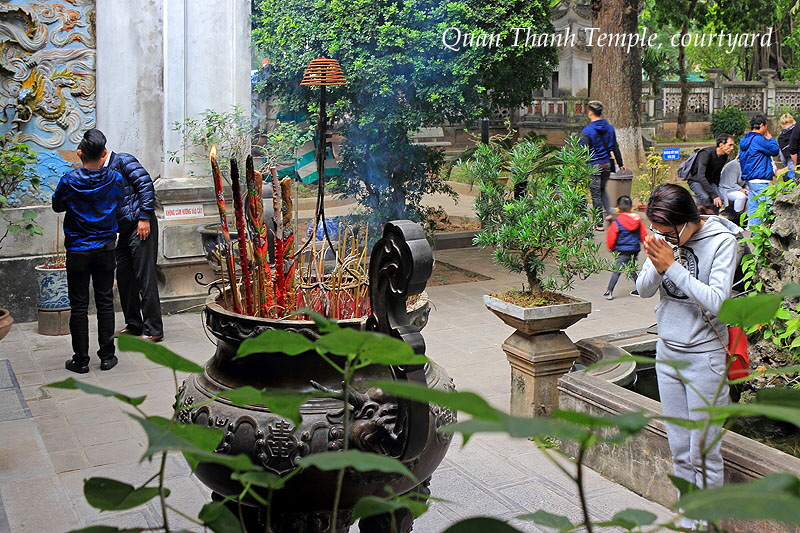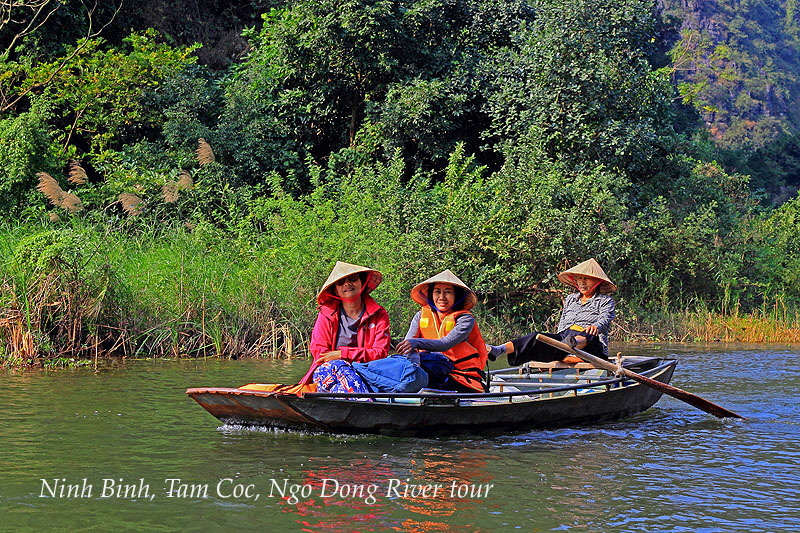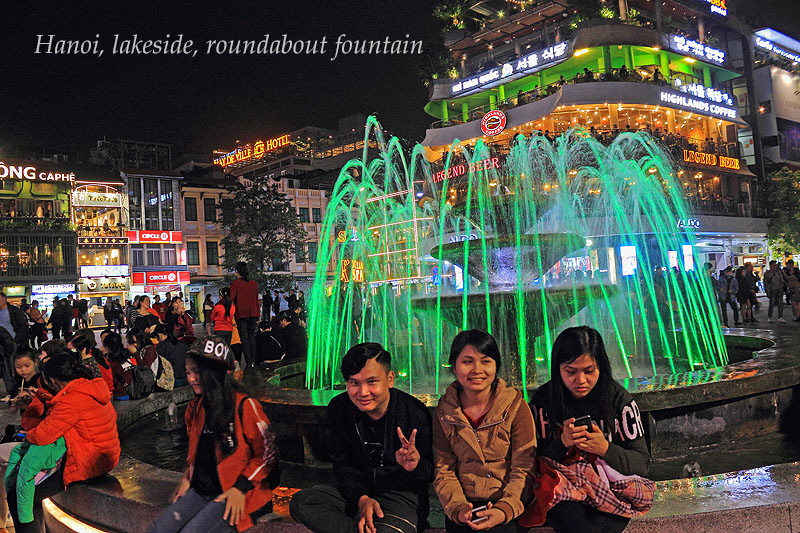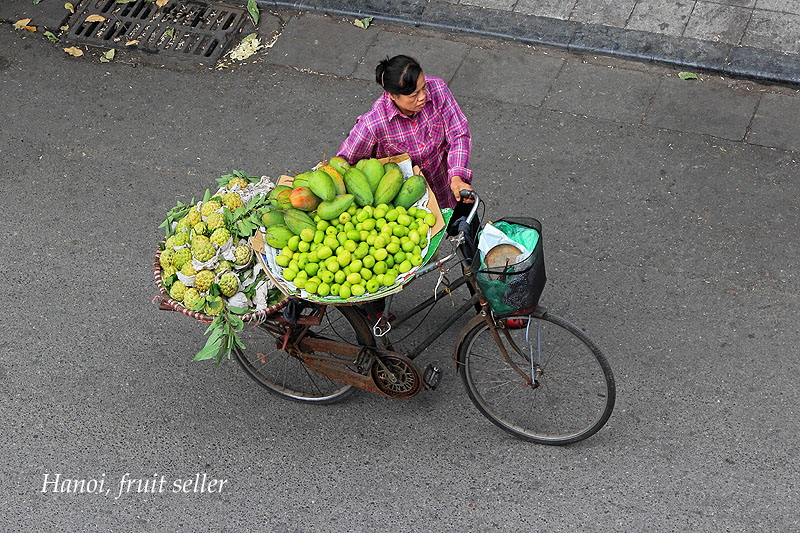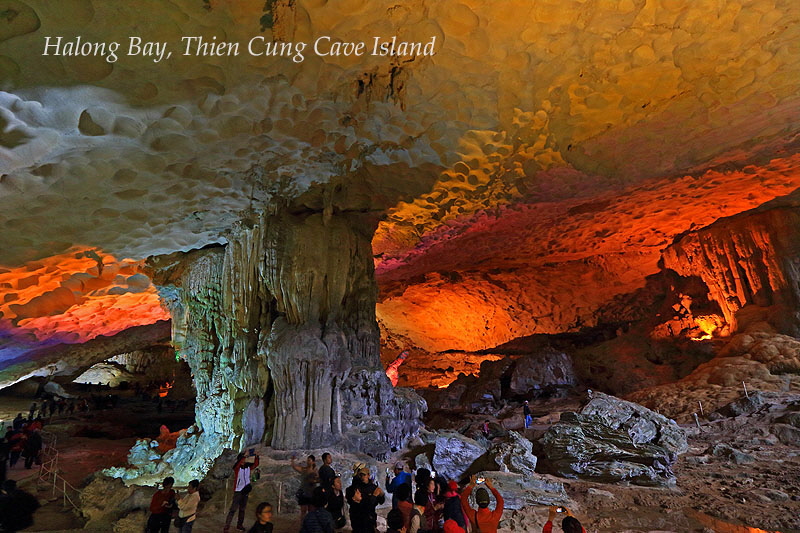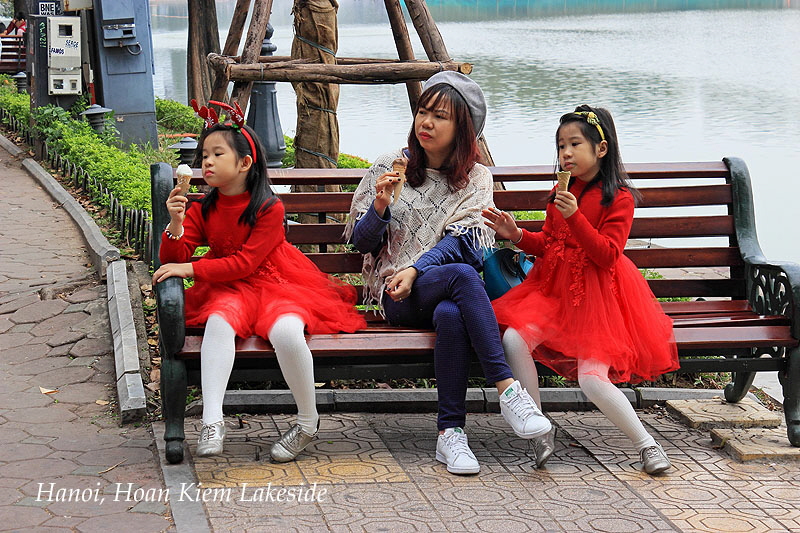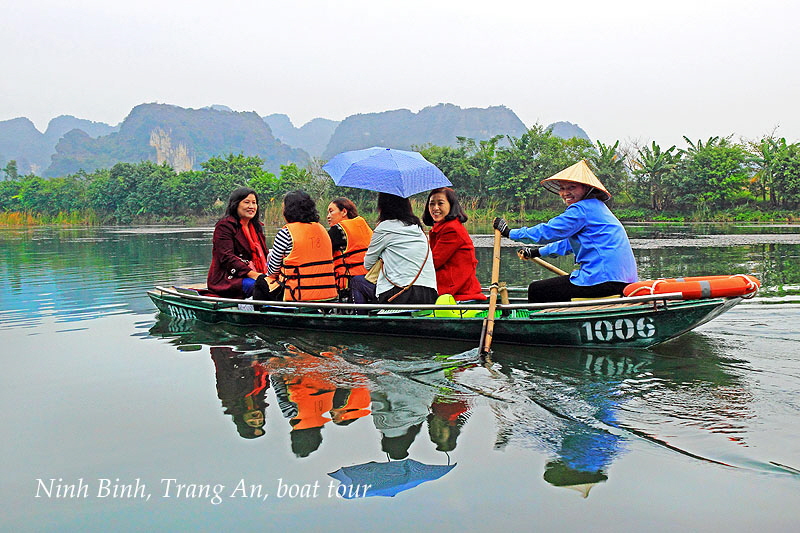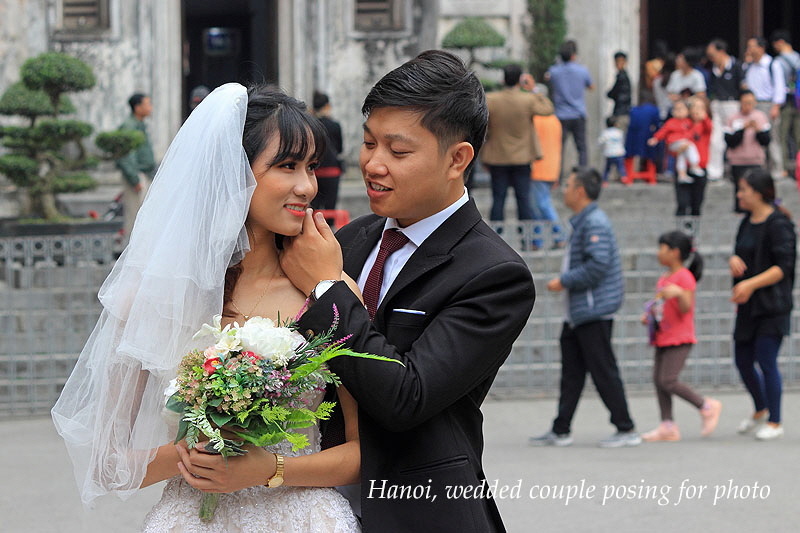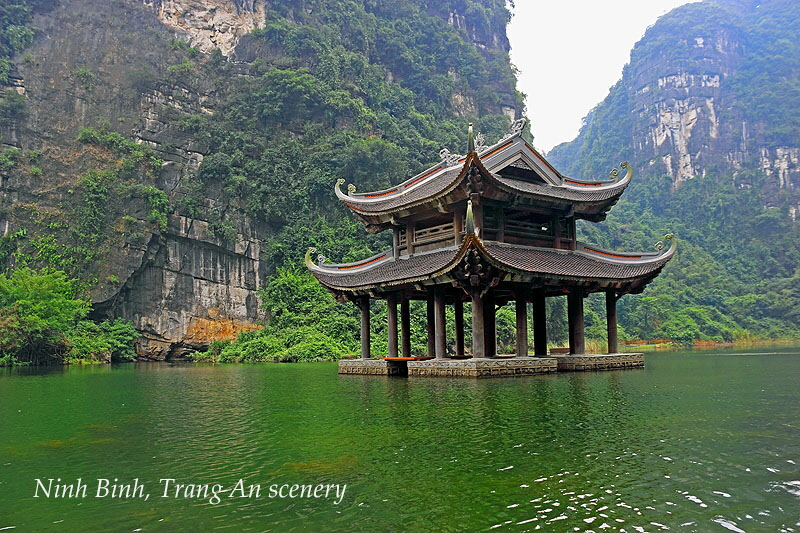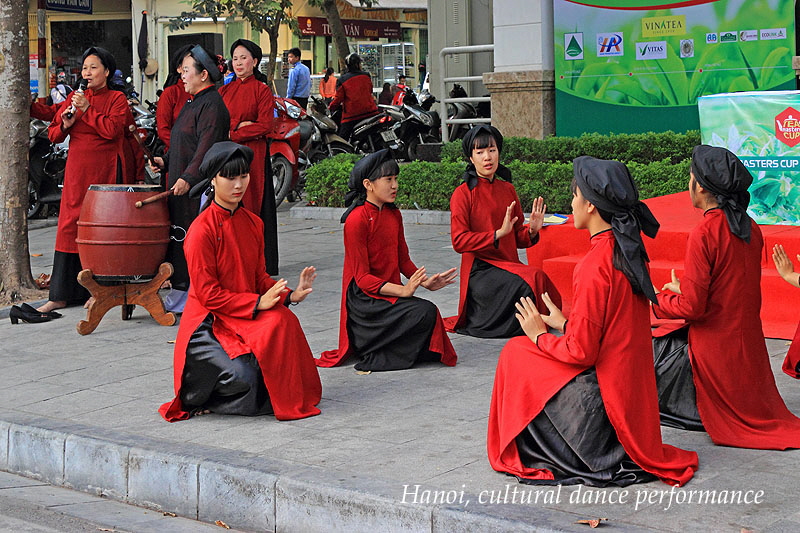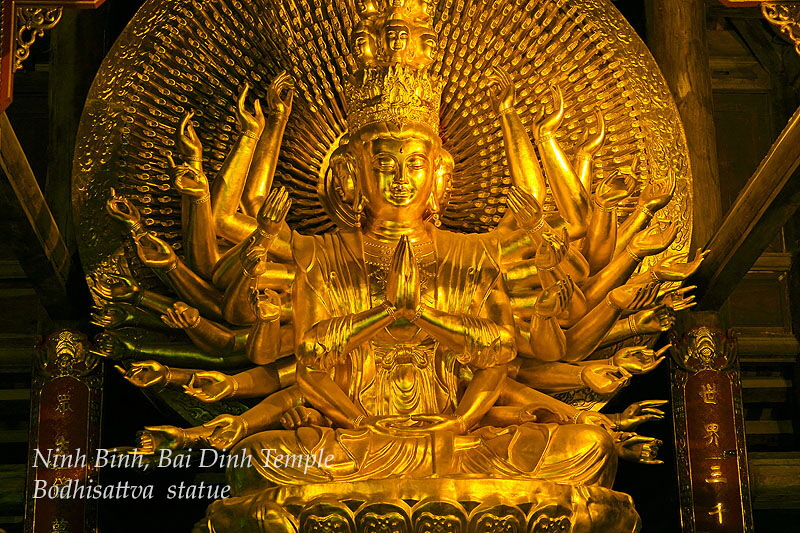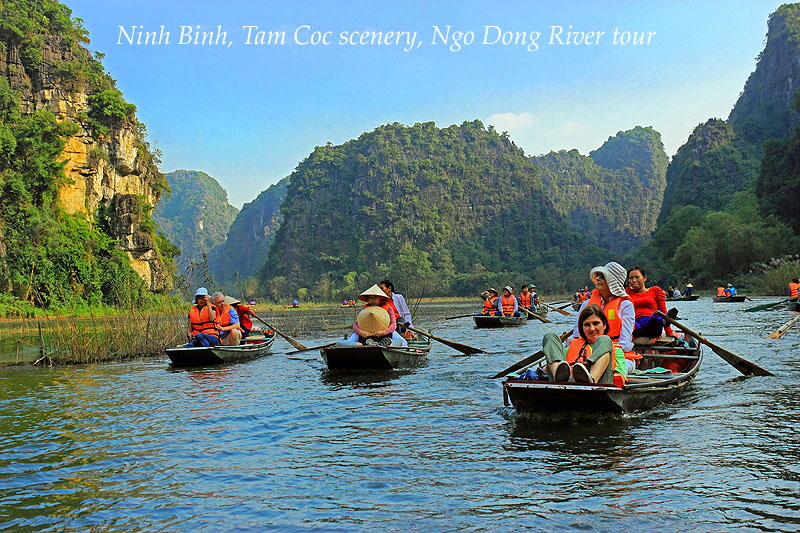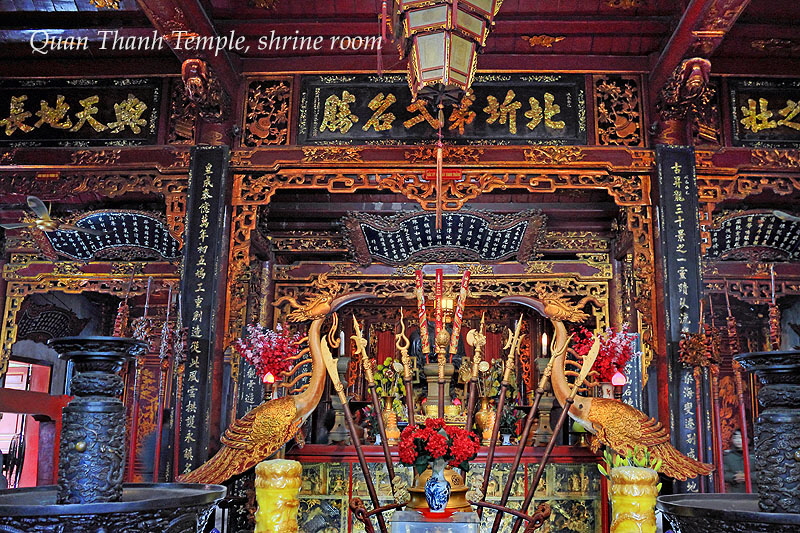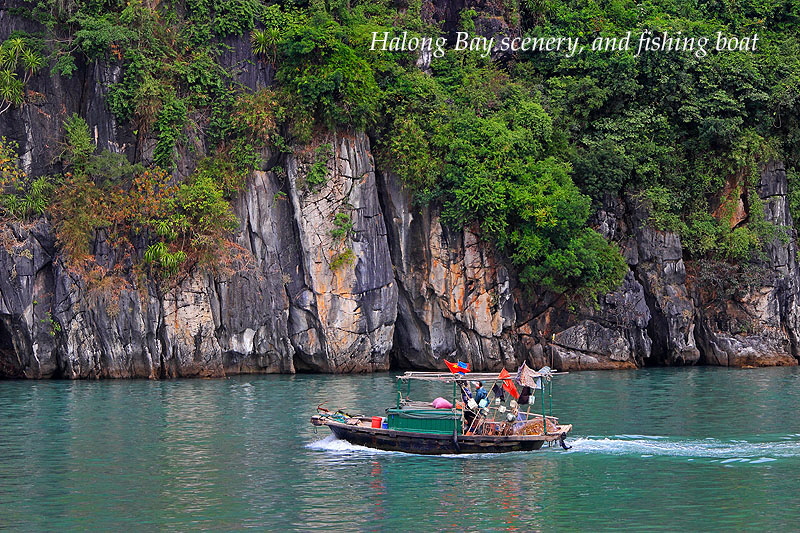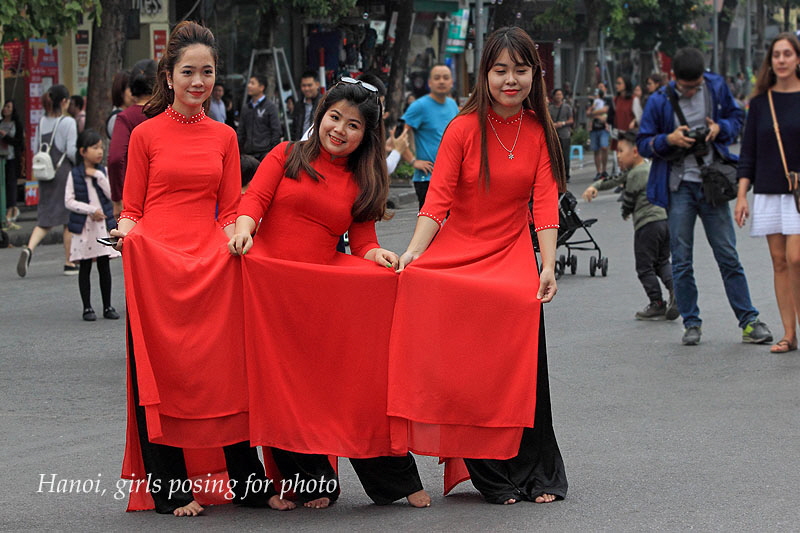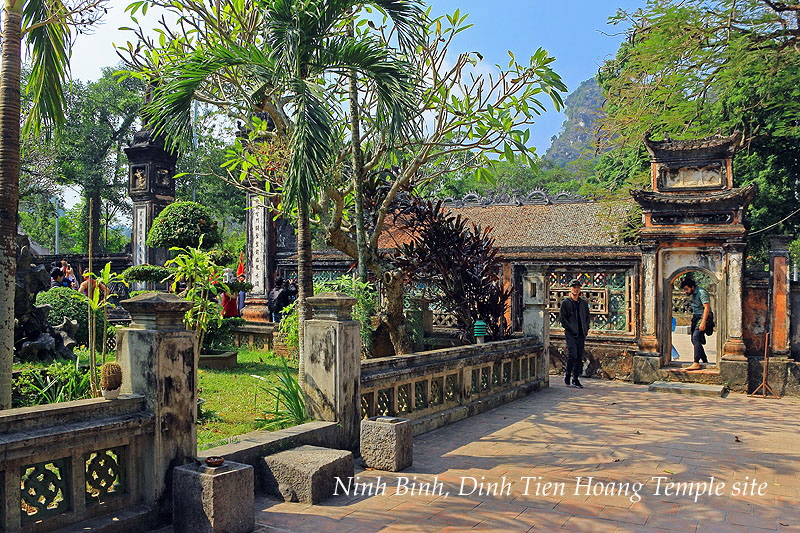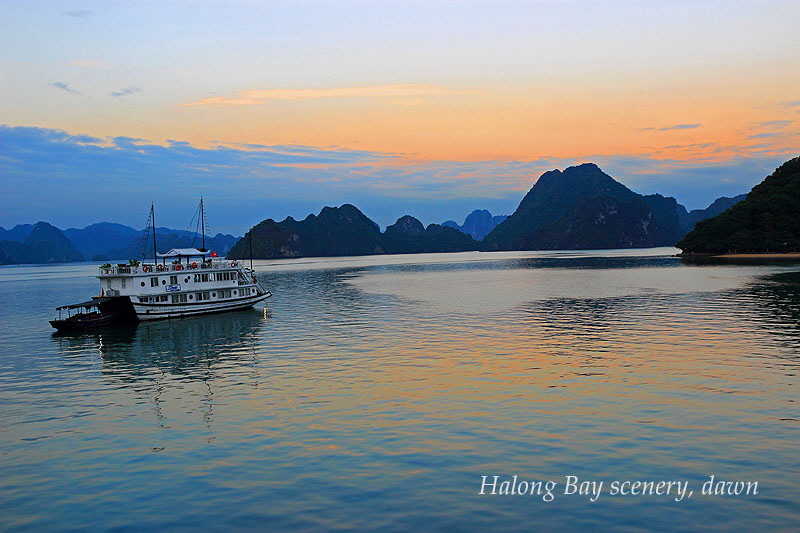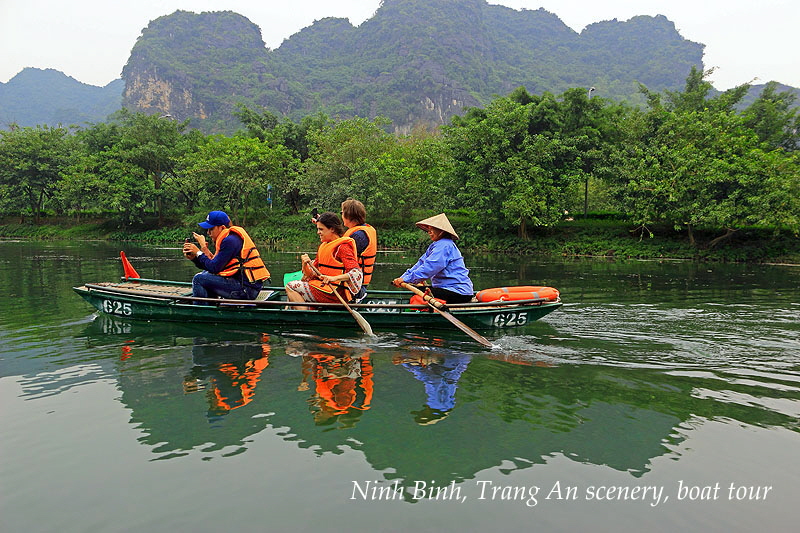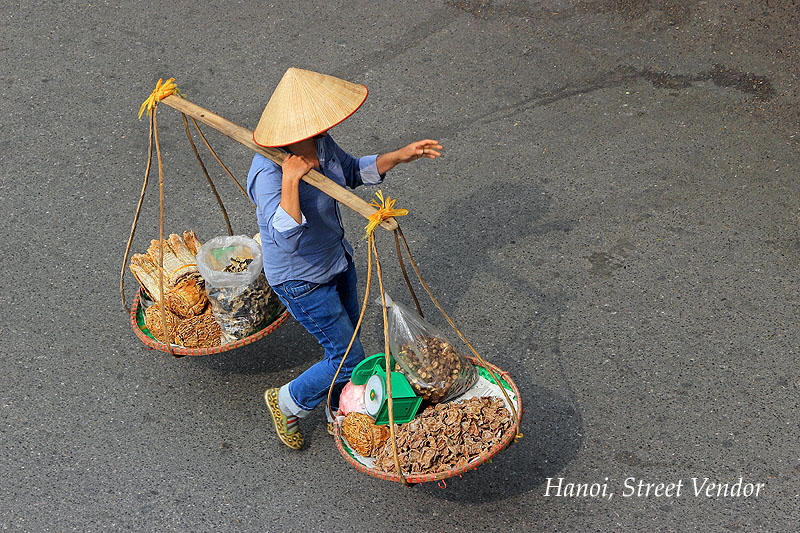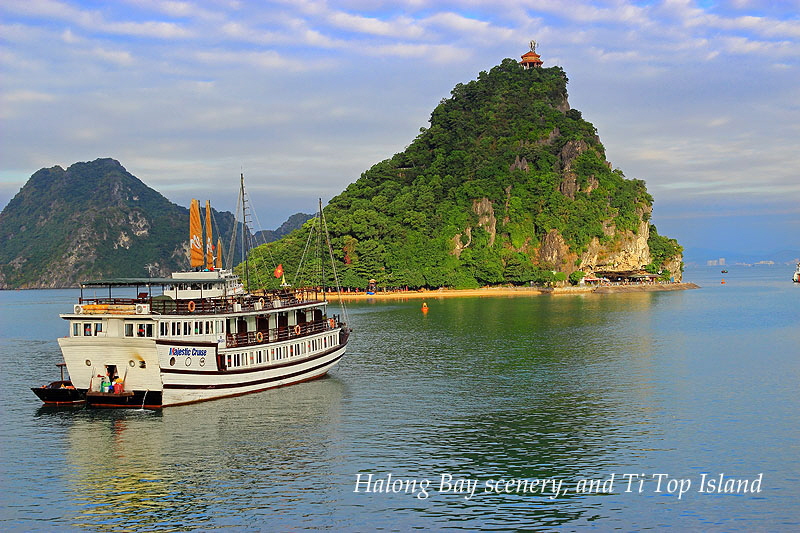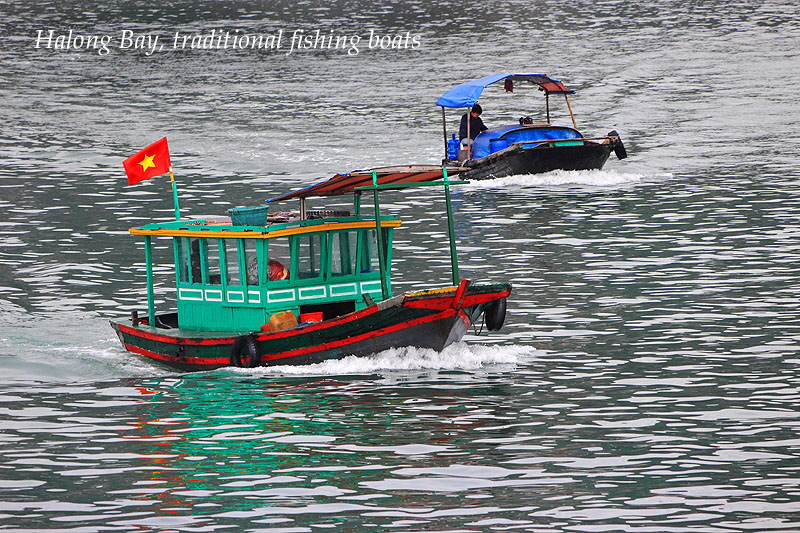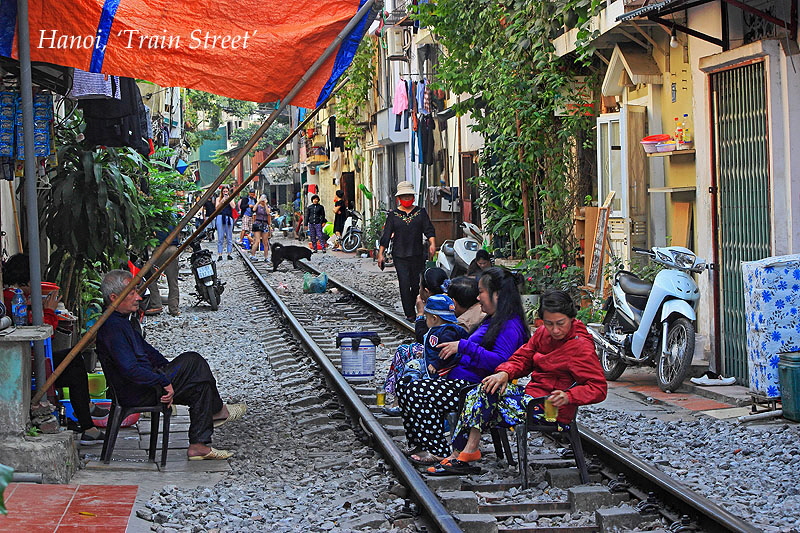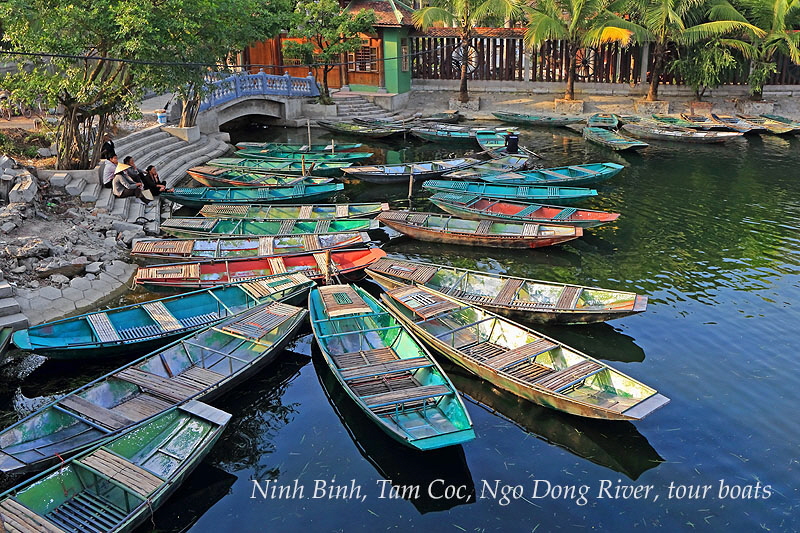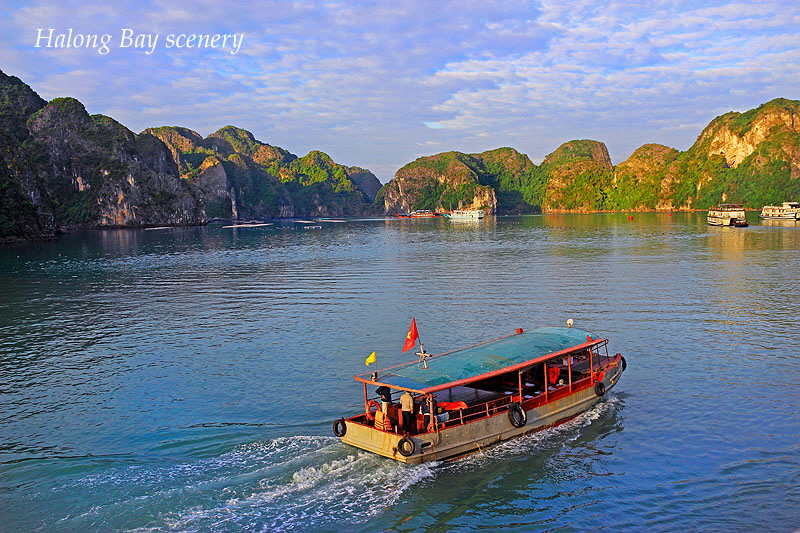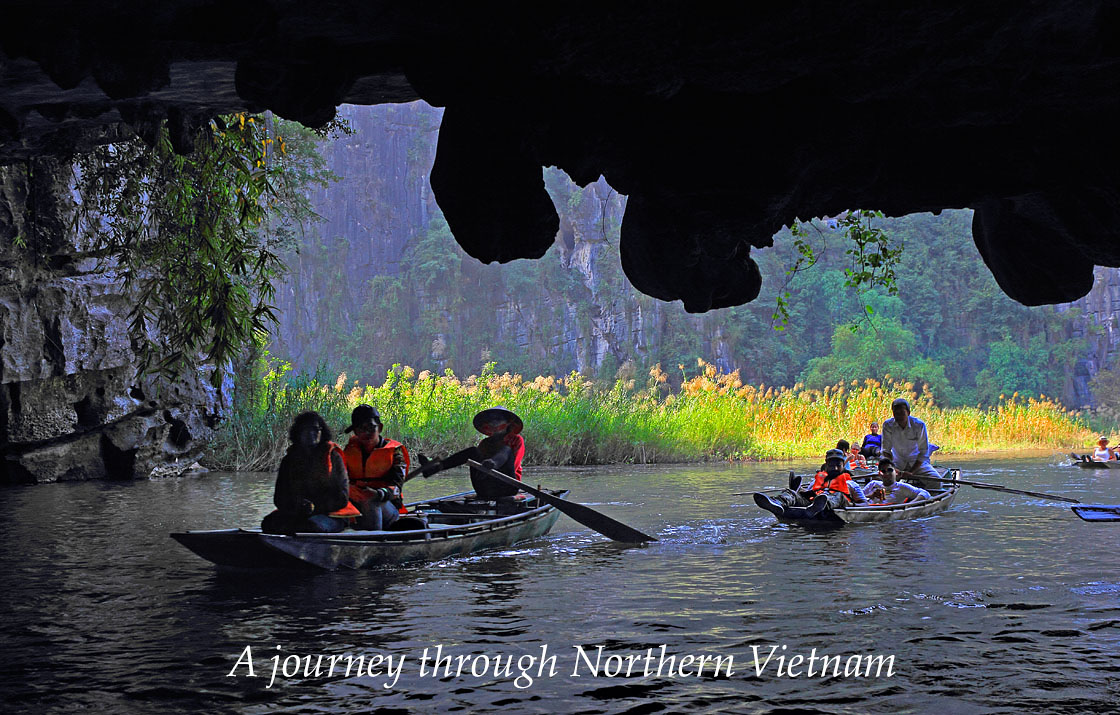
Culture, nature, adventure
“The trick when crossing the road”, said my guide, “is walk slowly, don’t run. The bikes and cars will slow down, or stop, or go around you.
But allow busses to pass OK?”
It took me a couple of days of practice, but I got used to it. Traffic in Hanoi looks chaotic. Horns may be tooting, if only to warn you that they are approaching, and not because they are angry - no road rage here. I watched a bike overloaded with goods, topple over right in the middle of a roundabout scattering everything across the road. Several vehicles stopped and helped the man reload his bike and sent him on his way.
Hanoi, Vietnam’s capital, and second largest city was ruled by the French until the 1950s. Today, its mixture of South East Asian, Chinese, and French influences makes it a wonderful cultural experience to savour.
It’s a compact city, and with sub-tropical temperatures, is excellent for exploring on foot. But if the long stretches of walking become strenuous, an inexpensive cyclo taxi (tricycle) ride will get you there quickly. Hanoi is also a good base from which to explore the countryside in northern Vietnam.
As in most of my travels, I did some research before arriving, and as there was so much to see in my three-week stay, it was essential to make a list of places to visit. However once there, hiring a personal guide for a couple of days also was both informative and inspiring.

Cyclo taxi, ideal for a short journey
Hoan Kiem Lake
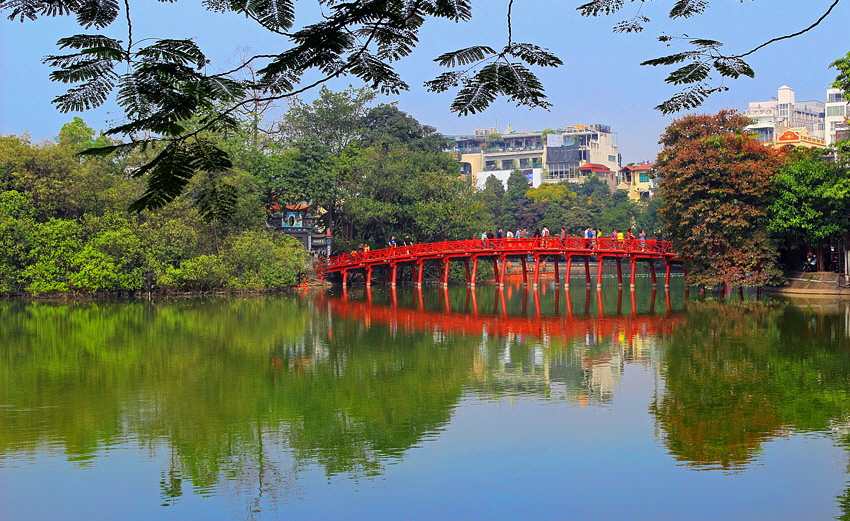
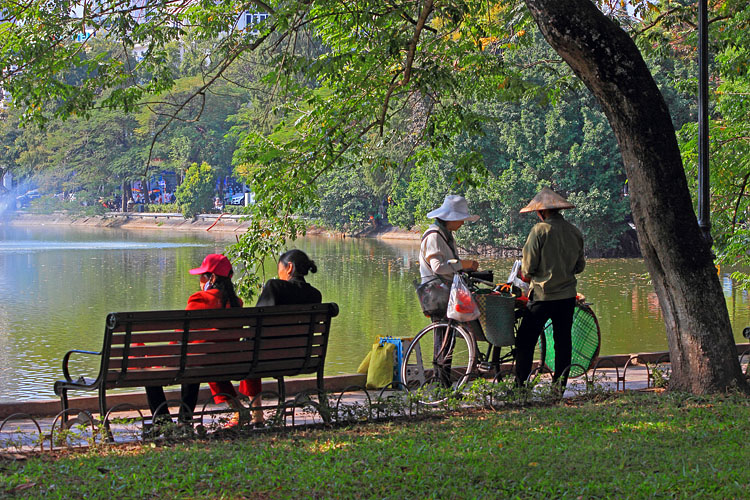
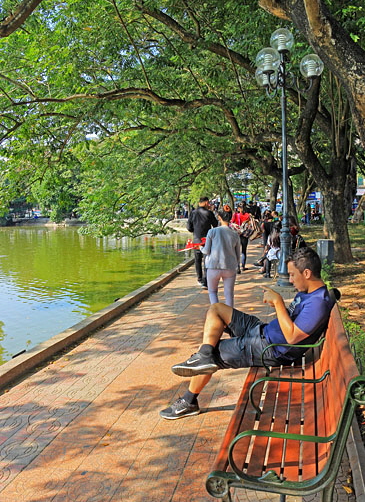
I stayed in the old quarter of the city, a short walk from the Hoan Kiem Lake. Along with the Ngoc Son Temple on an islet and ‘Turtle Tower’ in the middle of the lake, it’s one of the most scenic spots in the city, enjoyed by both Hanoians and visitors alike. The walkway around the lake is perfect for a stroll and people watch. After a day of sightseeing, I found myself heading almost every evening to sit by the lake and relax. A couple of times a young lady, and on another occasion, a young man sat beside me and attempted a conversation.
A little cautious at first, I soon realised they were trying to learn English from tourists. They were friendly and courteous, and I enjoyed conversing with them.
I came to appreciate Hanoi as very much a people-friendly city. Even with the language barrier, using my few words of Vietnamese to say please and thank you, communicating with others was easy. Young and old mix together, and at weekends when part of the city by the lake becomes pedestrianised, it was lovely to watch families come out to enjoy the day. Youngsters love to dance and entertain with cultural performances. Other couples like to show off vaping. Seeing me carry a camera, everyone was happy to pose for photos.
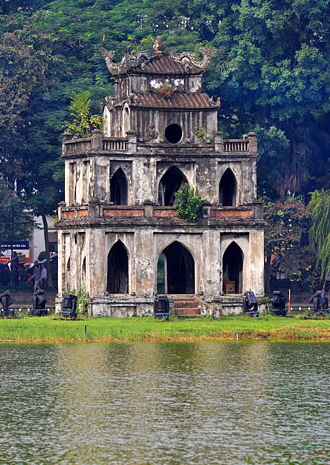
Turtle Tower
A people-friendly city
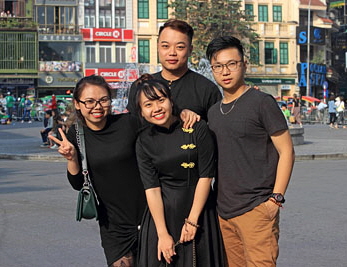
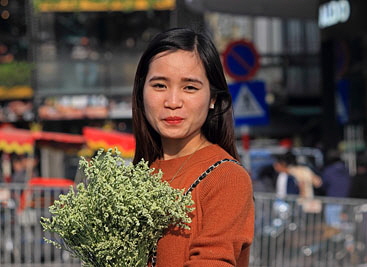
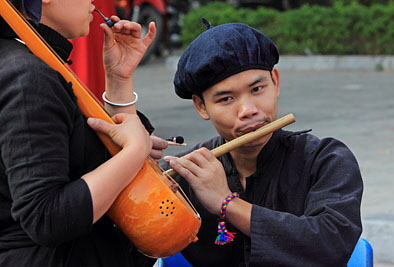
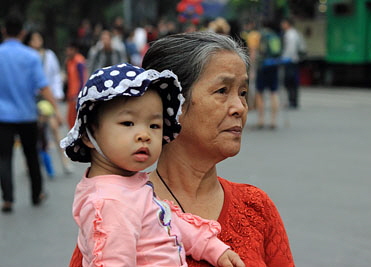
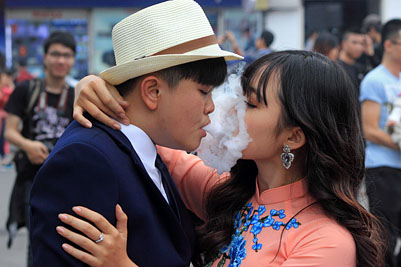

Walking was also the best way to view historic monuments and colonial architecture. And there were moments when I had to stop and just watch people go about their daily activity - vendors carrying heavy loads, flower sellers, children rushing off to school, and of course enduring the non-stop traffic. Many a time, someone would pause by me with a smile, asking where I came from, try to chat, and move on. Despite warnings about bag snatchers on mopeds, I felt safe and welcomed in this great city.
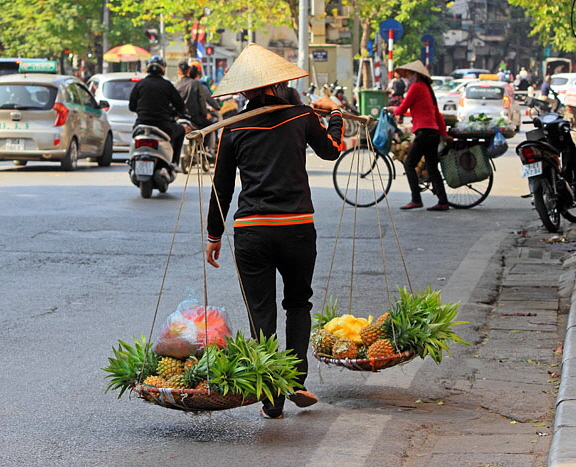
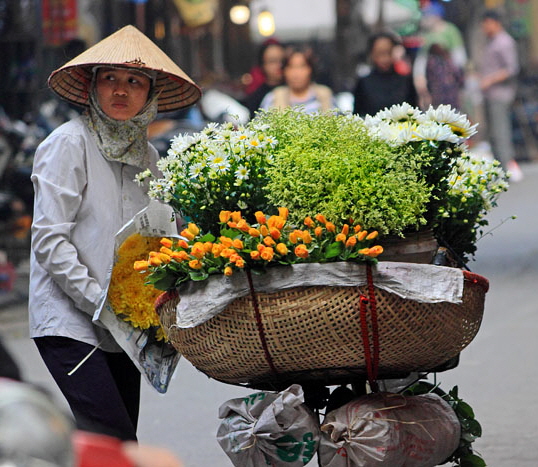

And when the midday heat and dust were somewhat overwhelming, a five minute taxi ride brought me to the Hanoi Botanical Gardens (Bach Thao Park) near the West Lake. It’s a cool green space with a lake, diverse vegetation, and flora. Several stone sculptures add to the beauty of the garden and is a tranquil space for Hanoians to escape the noisy city traffic
Botanical Gardens
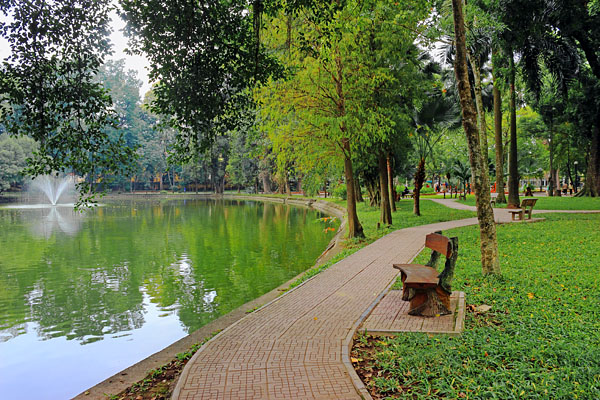

As a culture addict, I love visiting temples, and in Hanoi, I had my fill of it. There are more than fifty, and I managed to see fourteen. As it’s too much to include here, do check out the feature on my favourite temples in Hanoi.
Imperial Citadel of Thang Long
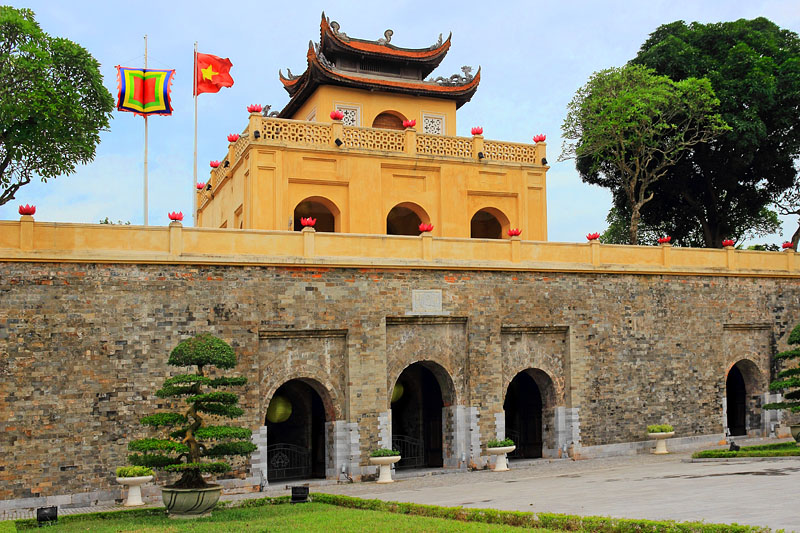
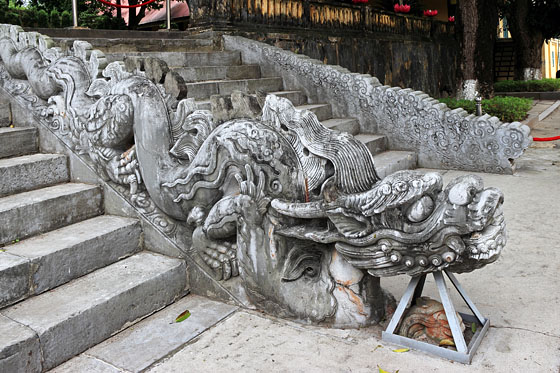

Dragon stairway
Underground army headquarters
As an introduction to the city’s past, a visit to the
Imperial Citadel of Thang Long is a good start. A UNESCO World Heritage Site, this place needs a good half day if you’re into both history and archaeology. It was built by dynasties over several periods from the 7th century. Entrance is through a fortress-like Doan Mon (main gate). The site is in two sections, with an archaeological area, and the citadel with historic buildings, ramparts, and Hau Lau (Princess Palace building). There are some splendid excavations to view like ancient water wells and a magnificent stairway with carved stone dragons that led to a palace that was once there. Other important features are the underground headquarters of the Vietnamese Army and the Relics Museum. This was one site I was glad to have my guide, to steer me through the large complex and explain more about the place.

Imperial Citadel of Thang Long, ancient water well
Fine Arts Museum

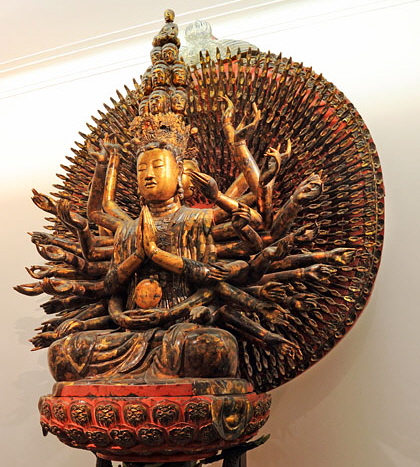
‘thousand-armed’ deity
For arts and culture enthusiasts, the Vietnam National Fine Arts Museum is a must visit. The galleries are full of impressive displays of pre-historic exhibits and modern art treasures. Unfortunately, due to my schedule, I only spent half an hour here, hurriedly passing from one gallery to another. There are some exquisite lacquer paintings, ancient wood carvings, and incredible statues of the ‘thousand-armed’ Buddhist deity Bodhisattva Avalokisteshvara
The Vietnam Women’s Museum is a tribute to the women of Vietnam throughout the ages. From those who worked the rice fields, to mothers, academics, business leaders, and their part in wars are all represented in four floors of exhibits, film and photos. Recently, a photo of the famous ‘Napalm Girl’ (Kim Phúc) and camera used by photographer Nick Út was donated to the museum and is on display.
Hoa Lo Prison Museum is located at the site of what remains of the Hoa Lo Prison. Built by the French to incarcerate, shackle and beat Vietnamese political campaigners, it was also later used as a prison for American and Vietnamese POWs. Exhibits like a gruesome French guillotine are a grim reminder of the horrors of war and imperialism. It’s a thought provoking site and should not be omitted in one’s itinerary.
Women’s Museum
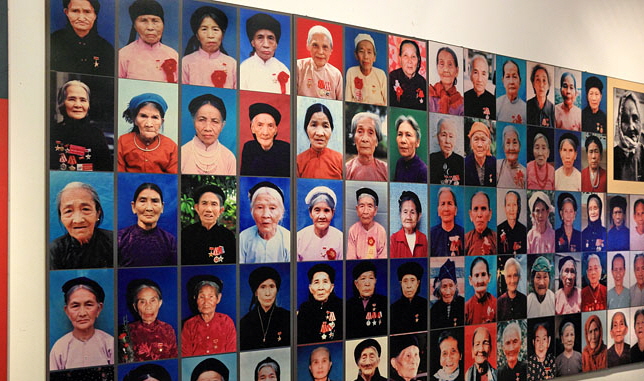
Hoa Lo Prison Museum, guillotine
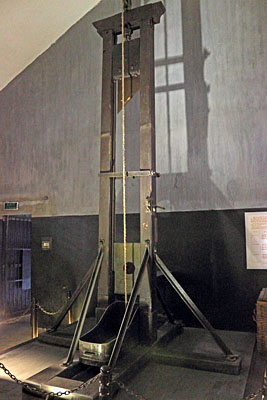
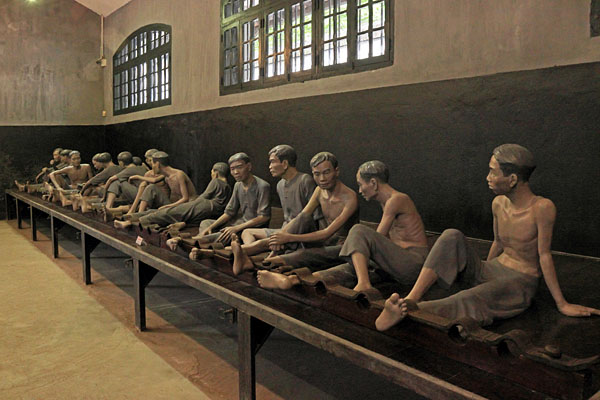
In pleasant surroundings, the Heritage House in Ma May Street is an excellent example of the traditional architecture of 19th century middle-income families and traders’ homes. It’s one of the few intact old-style properties open to the public. Renovated in 1999, yet retaining its character, it’s well worth the time spent here just to appreciate the architecture of that period, before the arrival of the modern concrete housing. The house has two floors, living rooms, kitchens and balcony, with displays of that period’s furniture, ceramics, and utensils. The courtyard in the middle of the house is well designed, letting in the natural light from the top and into the rooms below. The potted plants and ferns spread over the floors and balconies enhanced the ambiance of the place.
Heritage House
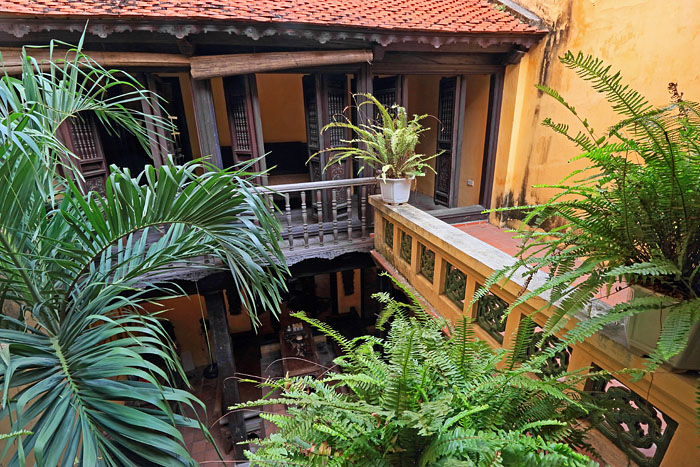
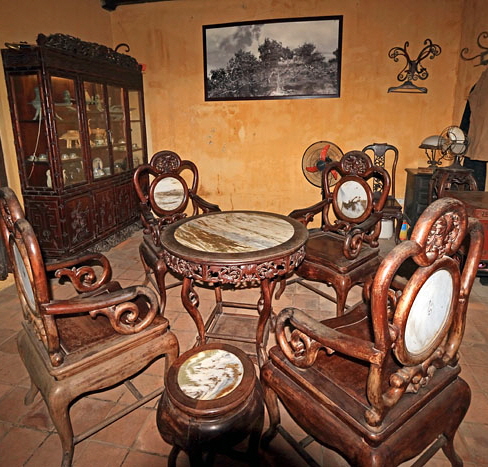
Cafe on a rail track...
One controversial hot spot is the ‘Train Street’. Located in a crowded neighbourhood in the old quarter, the speeding train passes straight through it twice a day. The street where the rail line goes through is so narrow, that the people living there have to make sure their belongings, food stalls, and bikes are all safely tucked away before the train comes hurtling just inches from you.
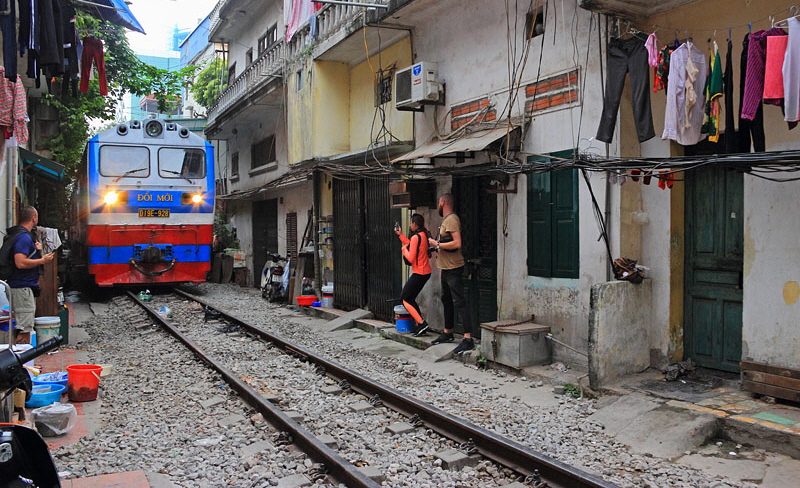
Many have lived here for generations and have adapted to this lifestyle. Apart from homes, there are tiny shops and cafes that attract tourists, for whom it’s an exotic experience not found in their home countries and is hard to resist. Once the train has passed, the cafe tables and chairs are brought out once again, even onto the track, and you can have a snack, or beer and enjoy watching the locals’ way of life on the tracks. Every tourist wants their picture taken, but beware never to take any photos with the train, as you could be dead in seconds! There is a campaign to close it down, as the increase in visitors poses an inevitable risk of an accident or death.
Cafe on the rails


Once the sun goes down in Hanoi, the bars and restaurants get busy quickly. Street entertainers and musicians appear from nowhere, and the evening continues way into the late night.
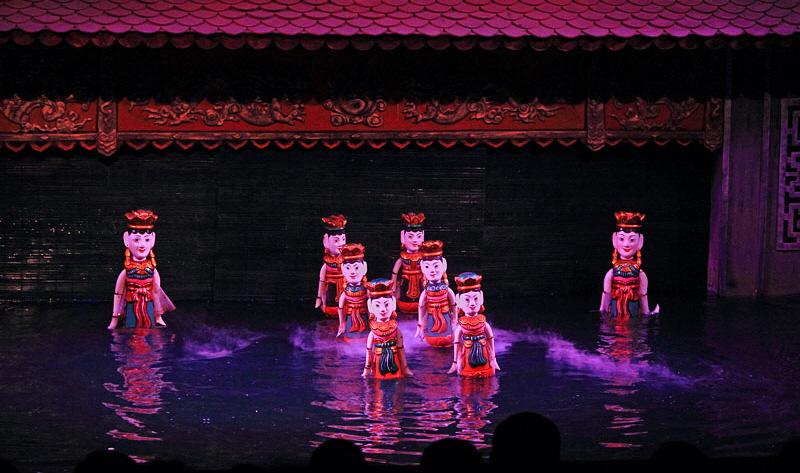
One of the best nighttime attractions is the Water Puppet show. Water Puppetry dates back to the 11th century when in the north, the rice fields would flood, and the village folk created this form of entertainment. The show today enacts ancient tales from local lifestyle and folklore and is a colourful spectacle. Tickets get sold very quickly. I tried to book online, and unsuccessful, went to the Thang Long Water Puppet Theatre and purchased it there. The show lasted about 50 minutes and was thoroughly enjoyable.
Later, stepping out of the theatre, the adjacent streets were crowded with street food stalls. Finding an empty stool, I quickly grabbed the seat and settled for a quick bowl of noodle soup before heading back to my hotel.
A gourmet’s delight...
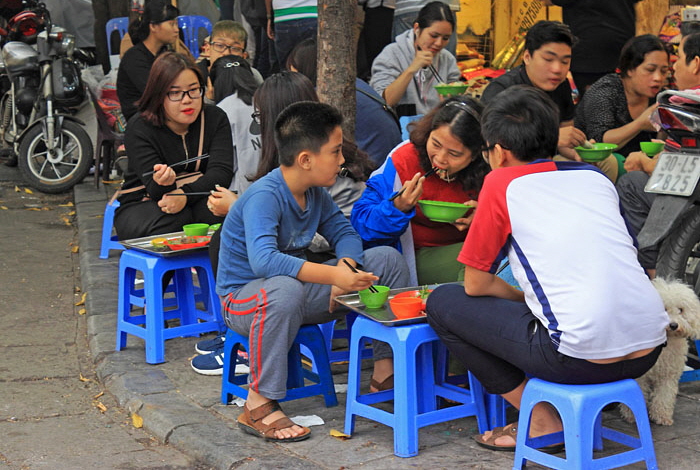
Vietnamese cuisine is renowned world-wide. Whether I was dining at an upscale restaurant, or sitting on a tiny plastic chair at a pavement cafe, there wasn’t a single meal that I didn’t relish. Local cuisine is best enjoyed at night markets too. Some don’t have menus, and when you sit with others and see what someone else is having, just point out, and try. While the choice is immense, there were two items I had regularly. The most popular, and my favourite is Bun Cha - a typical noodle soup, with vegetables, herbs, and grilled pork. Fresh Spring Rolls are delectable and nutritious - tightly wrapped in thin transparent rice paper, and filled with raw greens, herbs, other veggies, and roast chicken or shrimp.
Bun Cha
Fresh Spring Rolls
Cafe Dinh, small balcony
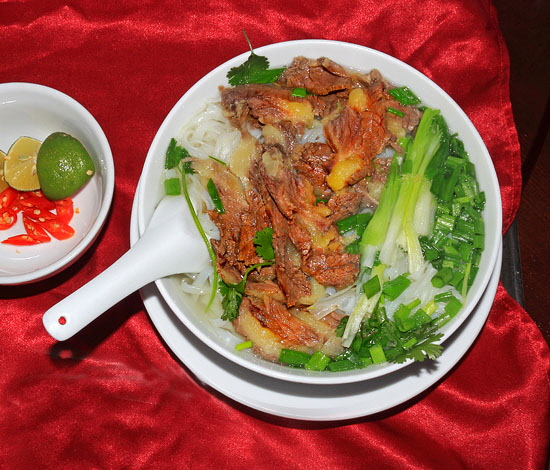
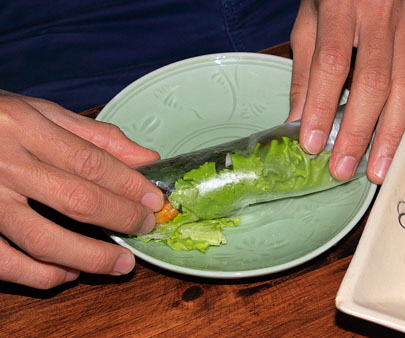
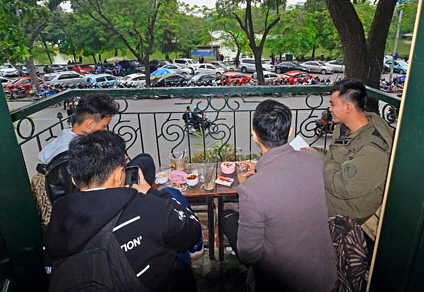
If you like to dine in an informal setting, where the tables are shared, and the atmosphere is noisy, yet serves exceptional cheap food, then head for Bun Cha Huong Lien restaurant in the old quarter. Packed with locals and tourists, it sprang into fame when former US president Obama dined there.
Vietnamese coffee culture: Cafe Dinh is a famous venue. Don’t expect 5-star treatment here. This is very much a place where locals gather to socialise and sip coffee at their leisure. It’s a dingy-looking place, and up the dark narrow stairs and onto is the small cafe area, with a few tables, chairs and stools. If you can get a place to sit by the small balcony overlooking the street, all the better. The regular coffee here is great. But my guide suggested that I also try some ‘Egg Coffee’ - a concoction of egg yolk, condensed milk and strong coffee were OK but a little too sweet for my liking.
Venturing beyond Hanoi
After a few days of sightseeing, it was time to leave the city and head for one of the world’s most famous places of natural beauty.
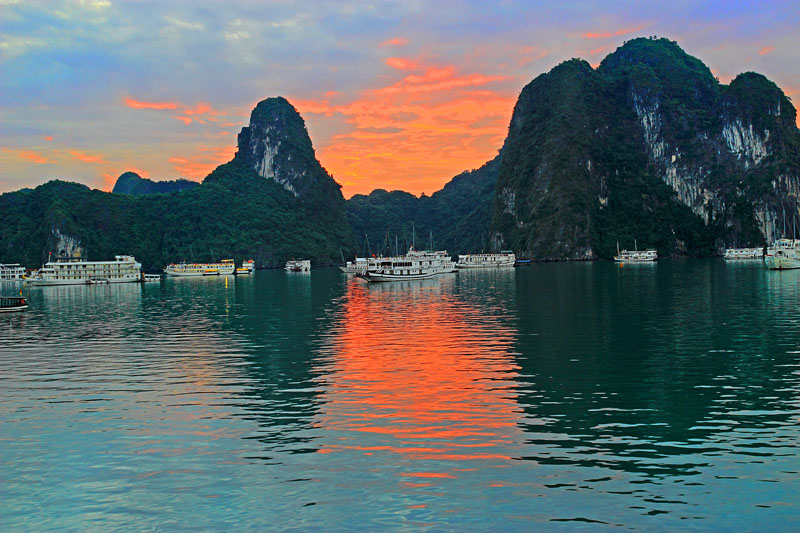
Halong Bay... colonized by overtourism?
Declared also as a World Heritage Site, it is one of the most visited spots, with millions cruising its sea each year.
Once home to floating fishing villages, visitors went there to observe their lifestyle and culture. Today, most of the traditional village life has diminished or moved to other locations, and instead it is teeming with tour boats to luxury cruisers for tourists. I admit it was an ethical dilemma, and yet I had to see it for myself. I booked onto one of the tours on a boat with an overnight stay on board. The drive took three hours from Hanoi, and once boarding our ‘cruiser’ followed by a hearty lunch, we set sail. The scenery over emerald waters is breathtaking, passing limestone outcrops and tiny islands. As I had expected, there weren’t many fishing boats to be seen, and a few that were, contained goods and souvenirs for tourists to buy. Whichever direction you looked, you couldn’t avoid the sight of other cruisers. Despite the tour guide’s advice on pollution, in some spots, plastic bags and bottles, and other rubbish were floating around the sea.
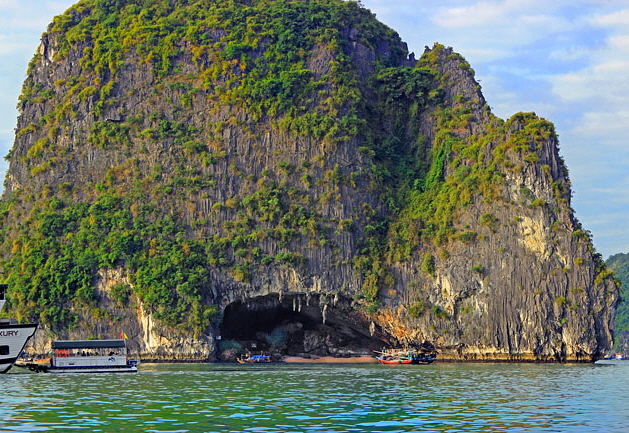
Halong Bay
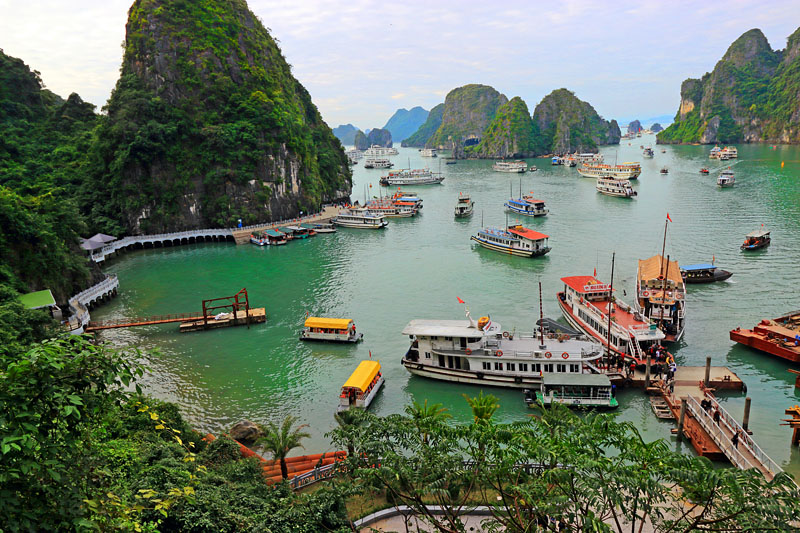
Our first stop was exploring The Thien Cung Cave Island. The 600 step climb up to the cave gave magnificent views of the surrounding bay and islets beyond. The caves themselves were impressive with huge stalactites and stalagmites, some about 30 feet tall. The cave was lit with colourful lights and paths guiding visitors along the way.
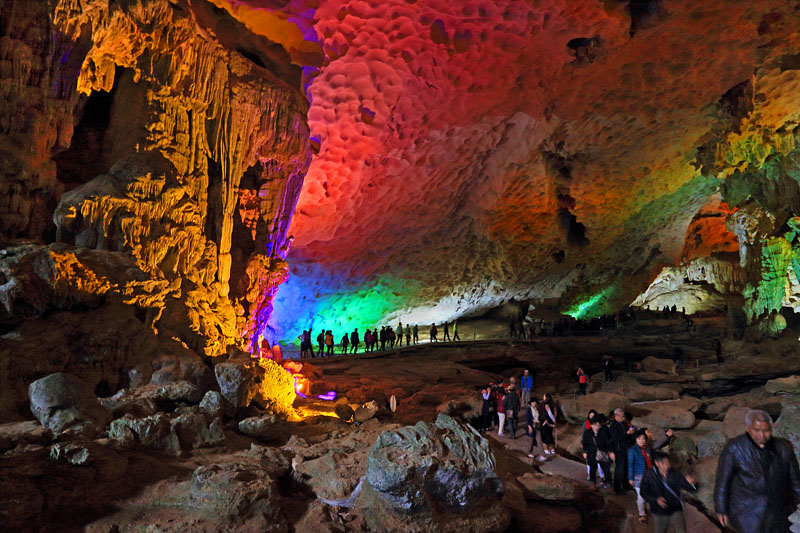
The next morning, I was up at the crack of dawn, and up on deck, to watch the sunrise over the limestone formations. The sky’s hues of deep yellow and orange, as it reflected and glistened on the waters was a beautiful vista, despite a dozen or so other anchored boats in the distance. Following an early breakfast, we sailed off to Ti Top Island. Named after Russian cosmonaut Gherman Titov, who visited it twice, first with Vietnam’s leader Ho Chi Minh in 1962, and on a return visit in 1997. In 2015, a statue of him was unveiled on the island. You can climb up to the top of this tiny island for gorgeous views of the sea and isles below. But what brings tourists here is also the lovely beach where I was able to relax for a couple of hours before returning to my boat.
While Halong Bay was certainly an inimitable place to visit, I was feeling saddened, wishing the authorities would bring in more stringent safety rules with regards to pollution, limit the number of boats and hopefully encourage the local fishing lifestyle and culture to be revived and sustained. Visitors should also respect and adhere to keeping the area pollution-free.
Sunrise, Halong Bay
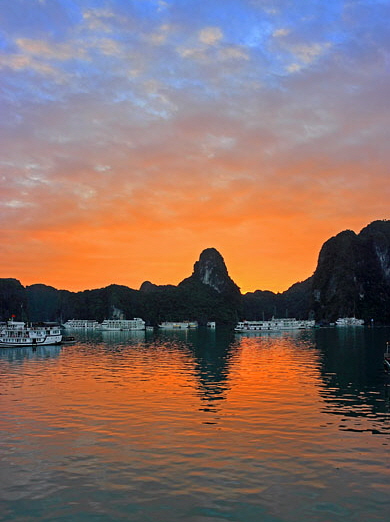
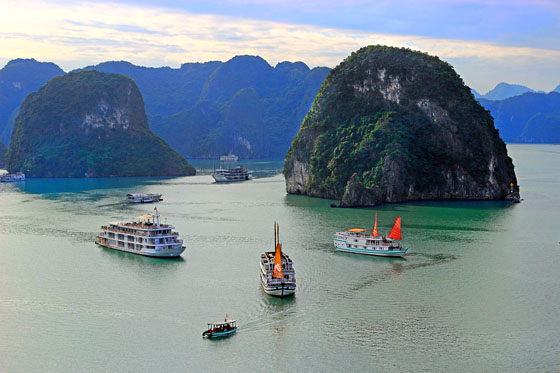
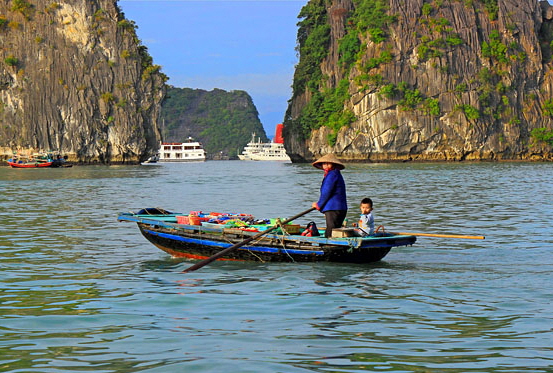
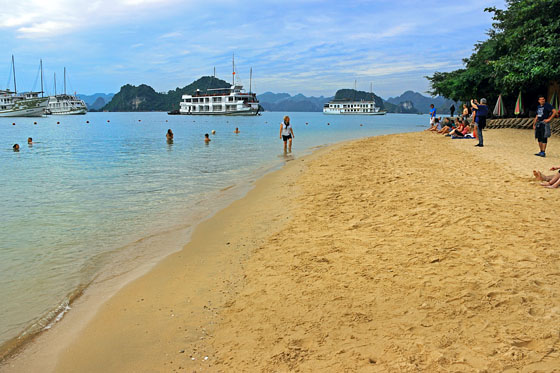
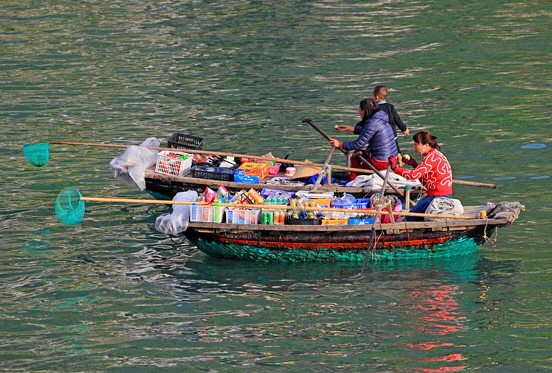
Ti Top island beach
Many fishing boats now with goods for tourists
Day trips to the countryside
Getting away from the city centre to the countryside is easy, and one of the best places is just an hour and a half drive (93km) to the lovely town on Ninh Binh. The natural beauty of the region with rivers, dense greenery, limestone outcrops, caves, and of course temples is spectacular. I did two day-trips there, joining a couple of small group tours, which was a convenient way to see some of the highlights of the region.
Bai Dinh Temple, corridor with Arhat statues
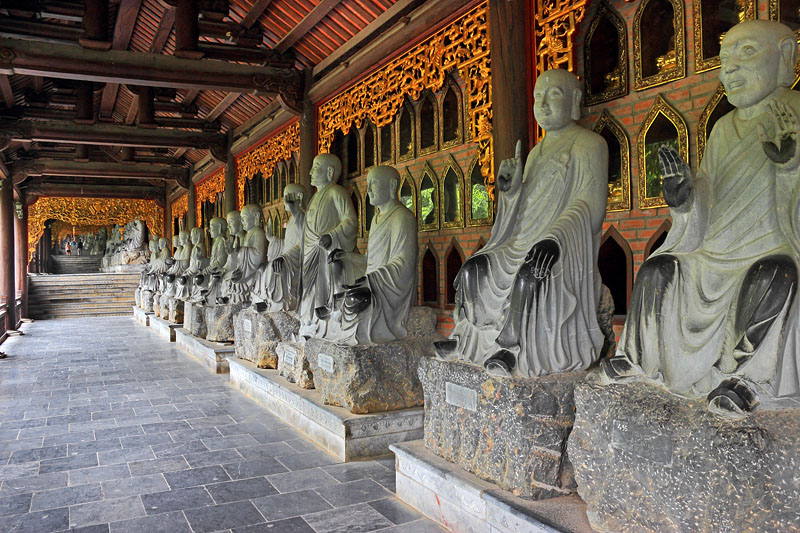
The Bai Dinh Temple is one of the largest complexes in Vietnam. It has several temples, ancient buildings, and a newly built pagoda. And a good half day, with plenty of walking, and steps to climb, is required to see most of the important sights. One of the largest - Phap Chu Temple, contains a huge 10 metre high bronze statue of Sykamuni Buddha and is confirmed to be the largest seated Buddha figure in the country.
Another amazing sight is the long corridors containing 500 bluestone carved Arhat (Buddhist deities and enlightened persons) statues. Approximately 2.3 metres (7.5 feet) tall, each one is unique, depicting the expert craftsmanship of local village artists. The Bell Tower houses a bell weighing 36 tons, and a 70 ton bronze drum on the tower floor. The tour was quite engrossing, and also quite tiring in the midday heat, and I was thankful for the couple of mini-stops for refreshment.
Bai Dinh Temple complex
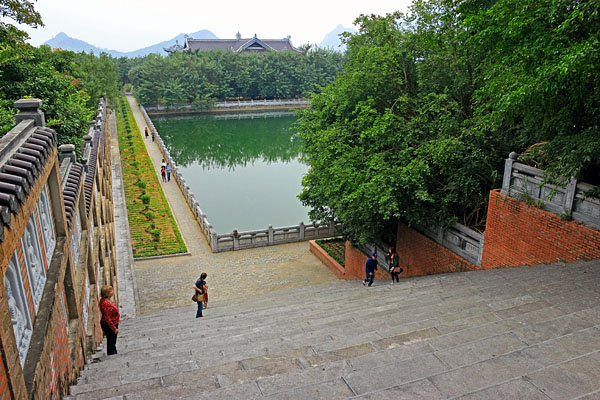
Sykamuni Buddha statue
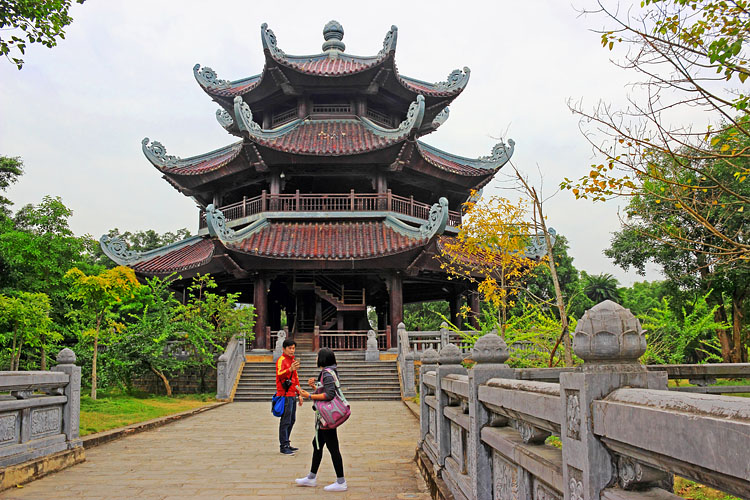
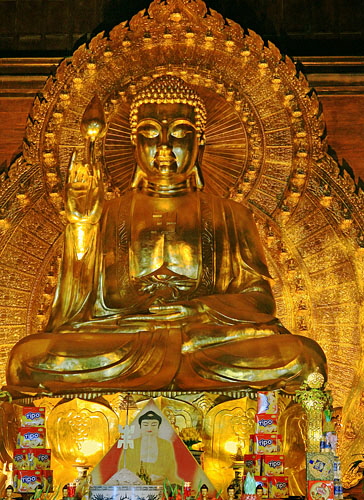
Hoa Lu, in the Ninh Binh Province, was the 10-11th century capital of Vietnam. In the outskirts of the town in a village, is the Dinh Tien Hoang Temple, in a rural setting with a scenic mountain backdrop and rice fields. You enter across a bridge over the river and through the magnificent Hoa Lu Gateway.
Hoa Lu Gateway
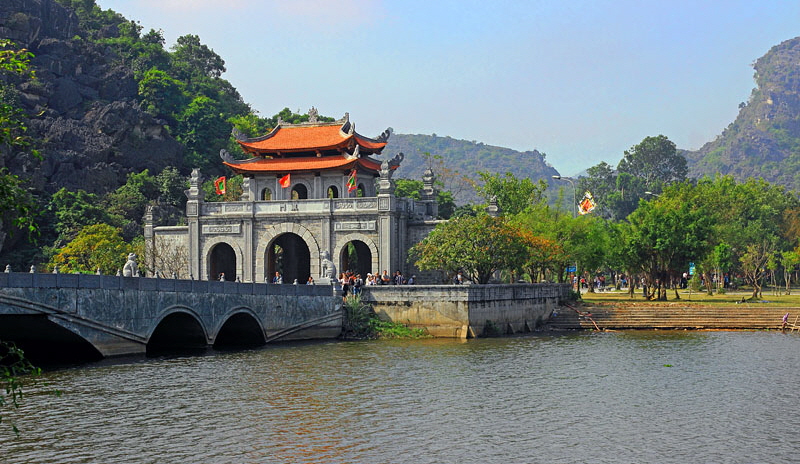
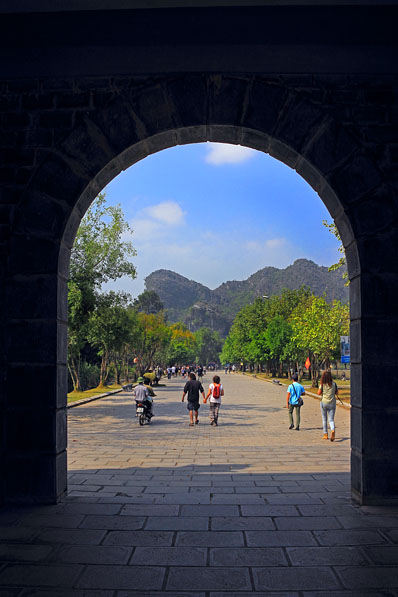
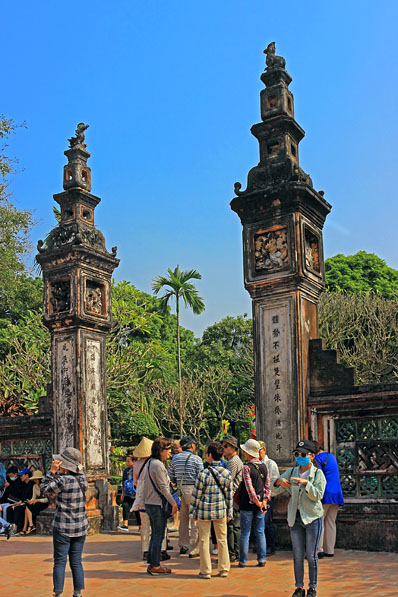
Dinh Tien Hoang Temple site
Built in the honour of king Dinh Tien Hoang, the first emperor of Vietnam, this is a well-preserved ancient site, even though much of it was restored in the 17th century. The temple gardens are fabulous with tall shady trees, lily ponds, stone carvings, and courtyards. The Nhat Tru Pagoda at the site is over 1000 years old and was built as a gathering place for monks invited by the king. In the main courtyard is a stone monolith slab of the king’s ‘big bed’, with intricate carvings. With picturesque old gateways, stone pillars and sculptures, it feels like you’ve taken a step back in time.
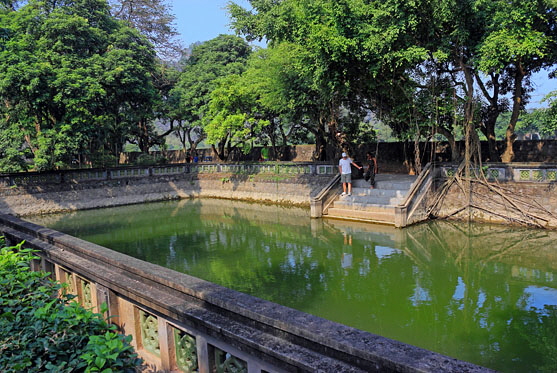
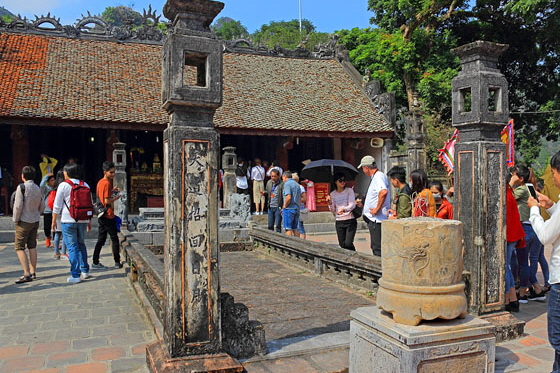
Dinh Tien Hoang Temple, pond
King’s ‘big bed’
Nature, scenery and boat trips
Part of the day trips to Ninh Binh, included a couple of river excursions. Known as the ‘Halong Bay on land’, and best viewed by boat, it has become more popular with local visitors. One of the tours was at Tam Coc, on the Ngo Dong River and the other at Trang An.
Ngo Dong River
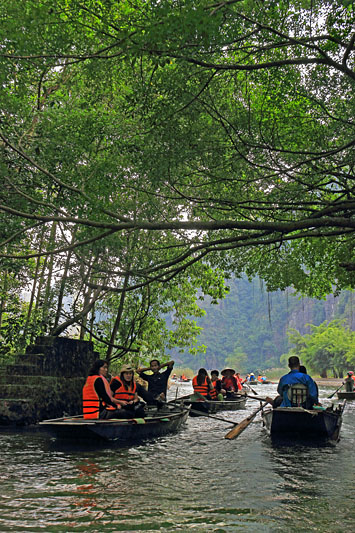

At Tam Coc, the rides are on small sampan boats, with the rowers expertly paddling with their feet. We cruised along the calm waters, with rice fields on either side and karst outcrops and mountains in the background. We then entered some caves, when the boat rower gestured us to crouch as the space above lessened. Each time we came through a cave and into the open, the scenery was stunning.
Expert rowers
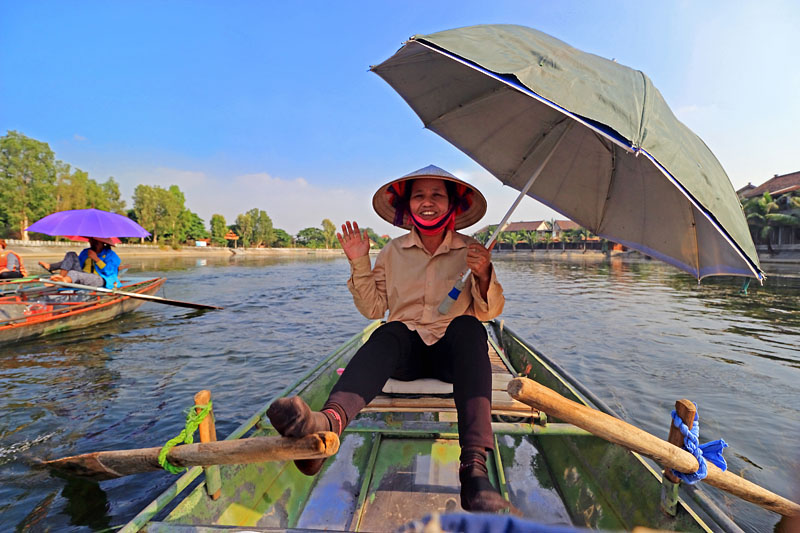
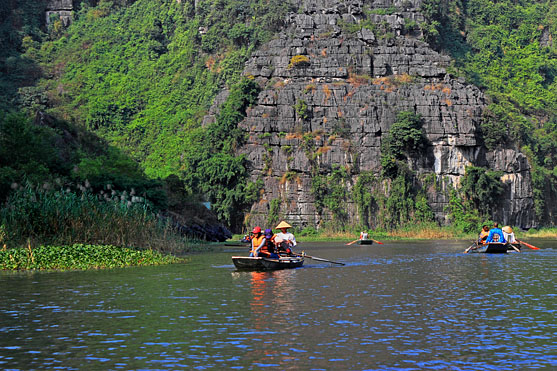
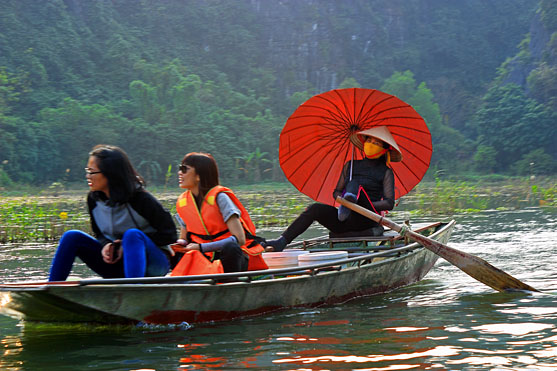
Tam Coc scenery, Ngo Dong River
My second boat trip was at Trang An, another World Heritage Site. Similar to Tam Coc, there was a detour to the movie set of ‘Kong - Scull Island’- which for me wasn’t really interesting. Each tour lasted nearly three hours. These were wonderful trips. I did however felt rather guilty for the boat rowers, for whom the work must be strenuous, paddling non-stop for over two hours. The only way of compensation was to tip them adequately.
Trang An
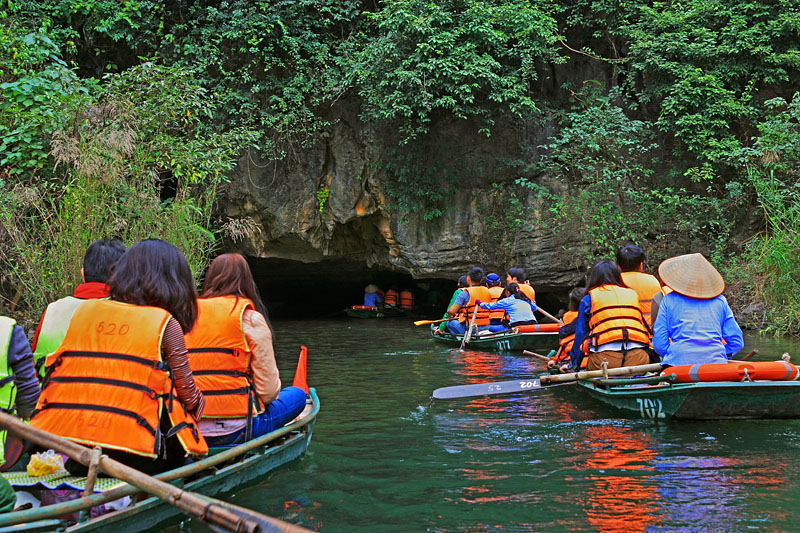
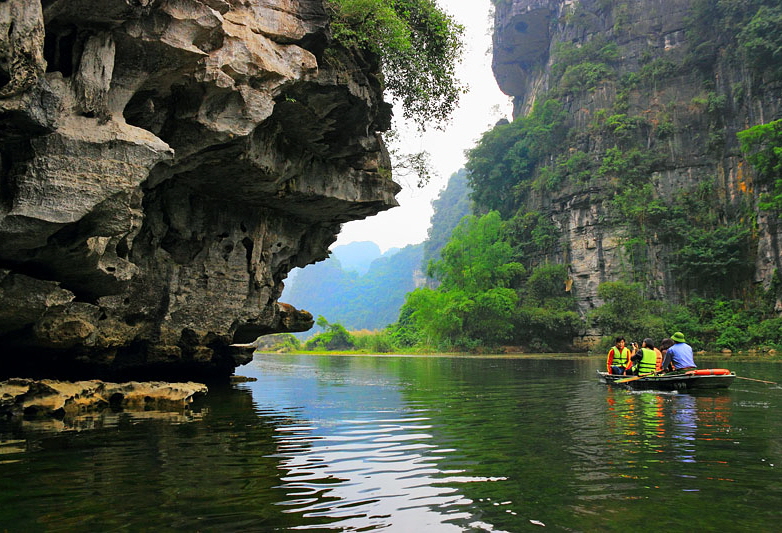
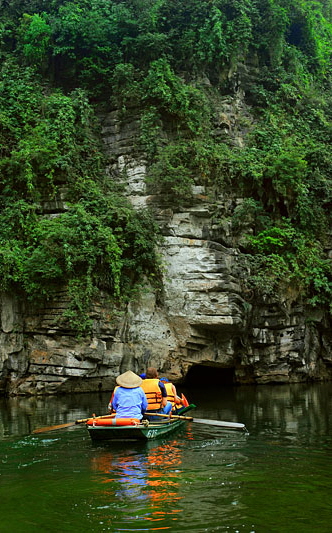
Still regarded as a destination off the beaten track, it remains to be seen if it will also be overrun by tourists, like Halong Bay has.
Trang An
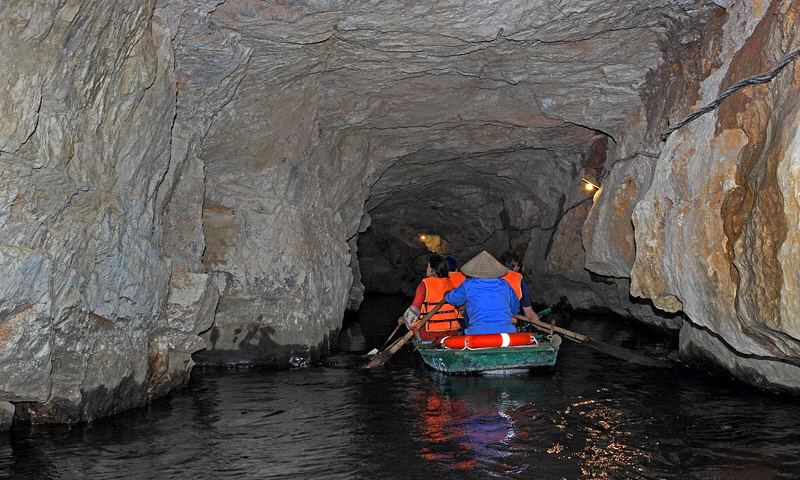
On my last day in Hanoi, Duong, my guide with whom I kept in touch, invited me to his home for dinner. Hugging onto the back of his motorbike, we drove through the maze of traffic to his small apartment in the old part of town. As it was nearing the Tet Festival (Lunar New Year), his family had prepared a special meal and had invited a couple of other friends too.
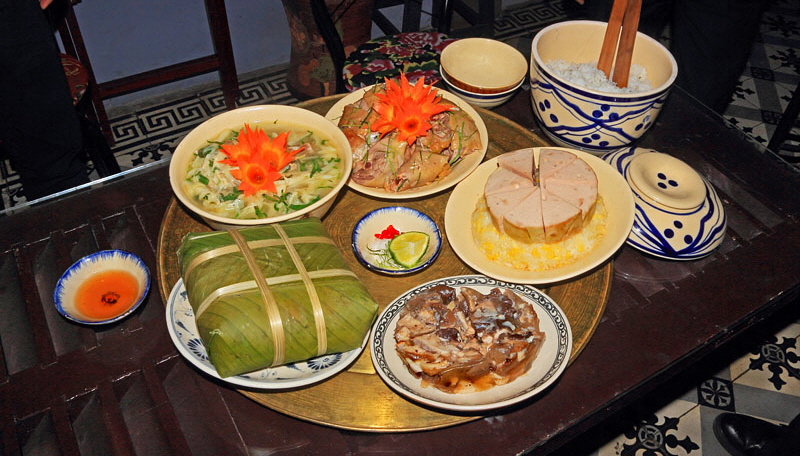

Sticky Rice
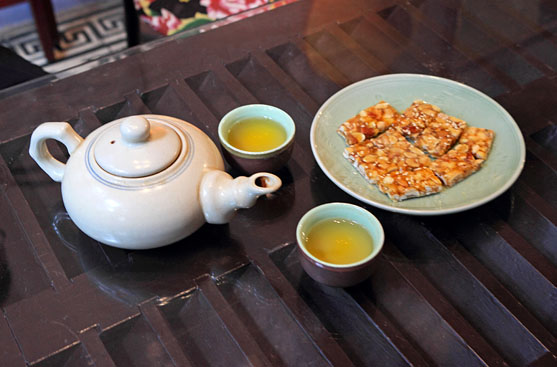
This was a gastronomic feast - spring rolls, sticky rice steamed in banana leaf, noodle soup, pork and chicken dishes, cakes, sweets and tea served in tiny cups. It was a delicious meal, an end to a lovely evening, and a memorable holiday and adventure.
30 images here ©JAYTRAVELPHOTOS
© COPYRIGHT notice. The images on this site are for viewing only.
To purchase any, for personal or commercial use, please contact us at jaytravelphotos@aol.com


